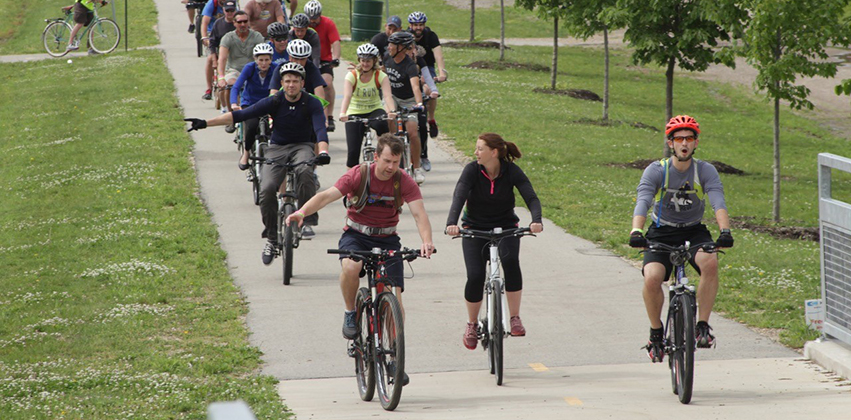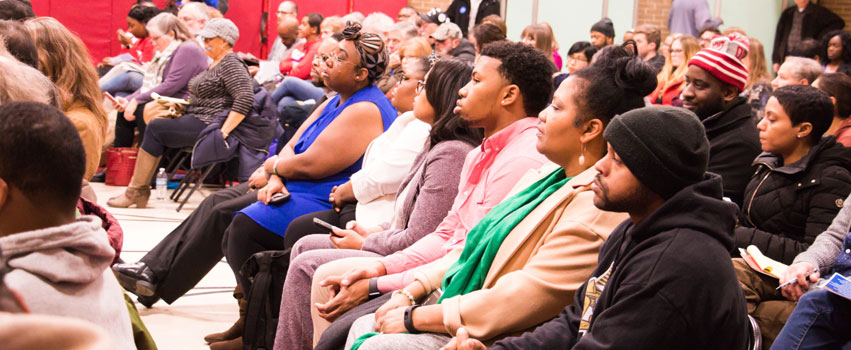Evolution of a Trail

By 1960, the rails and ties from Alta to Toulon were removed and the former Rock Island line grew wild with trees, prairie grass and native plants. Five years later, the Forest Park Foundation, under the leadership of William Rutherford, acquired this abandoned right-of-way. The Foundation donated the property to the State of Illinois in 1969 for the purpose of constructing a recreational trail. It was to be one of the state’s first “rails-to-trails” projects.
While bridge construction and surface improvements began in 1975, a group opposed to the project also sprang up. Their objective was for property owners on either side of the right-of-way to claim the property for personal ownership. As legal challenges halted construction, emotions ran high and some vandalism took place—including a fire set to the newly completed deck of the Spoon River Bridge.
It is possible that no piece of public land in Illinois ever caused as much controversy as the Rock Island State Trail. But with Friends of the Rock Island Trail leading the way, trail advocates persevered. The Illinois legislature finally permitted the project to move forward, and the first five-mile segment between Dunlap and Princeville opened to the public in 1981, followed by additional segments over the next several years.
Rock Island Greenway
When the railroad north of Alta was abandoned, the ten-mile portion of the Rock Island line from downtown Peoria to Pioneer Industrial Park, known as the Kellar Branch, remained in place. It was still used for infrequent deliveries of freight, but that usage dried up as truck transport became more economical.
In 1984, the Kellar Branch was abandoned and the City of Peoria and Village of Peoria Heights acquired the line for a total cost of $1.3 million. It was then leased to the Peoria & Pekin Union Railway (P&PU) for 20 years. It was estimated that 264 railcars annually would be required to retire the debt, but usage was far less than that projection.
In 1997, P&PU assigned its remaining interest in the 20-year lease to Pioneer Industrial Railcorp (PIR). Because there was no rail business on the line that year, the Peoria Park District proposed converting the rail line into a recreational trail—and more controversy ensued. In 2000, PIR parked railcars on the line to stop a hiking organization from using the trail. Four years later, PIR refused to abandon the line even after the 20-year lease agreement expired, and the federal Surface Transportation Board (STB) supported PIR in this claim.
In 2005, the City of Peoria committed to building a rail link connecting the north end of the Kellar Branch with the Atchison, Topeka and Santa Fe Railway in order to serve any possible customers in Pioneer Park and obviate the need for the Kellar Branch. To date, not a single railcar has used the new link.
Finally, PIR and another short line railroad, along with one former rail customer in Pioneer Park, demanded to be bought out before they would give up their claim to the Kellar Branch. In 2009, after agreeing to the payoff, the communities and the two railroads petitioned the STB to allow the line to be converted into a recreational trail. In 2010, the STB agreed and the two railroads and former rail customer were paid so the trail could be built.
The Final Hurdle
But there was still one remaining hurdle: a bridge for bicycles and pedestrians to cross the heavily traveled Knoxville Avenue. The Peoria Park District dedicated this new $8.1 million trail bridge near Junction City in 2014, and the Rock Island Greenway officially opened to residents and visitors alike. PM
